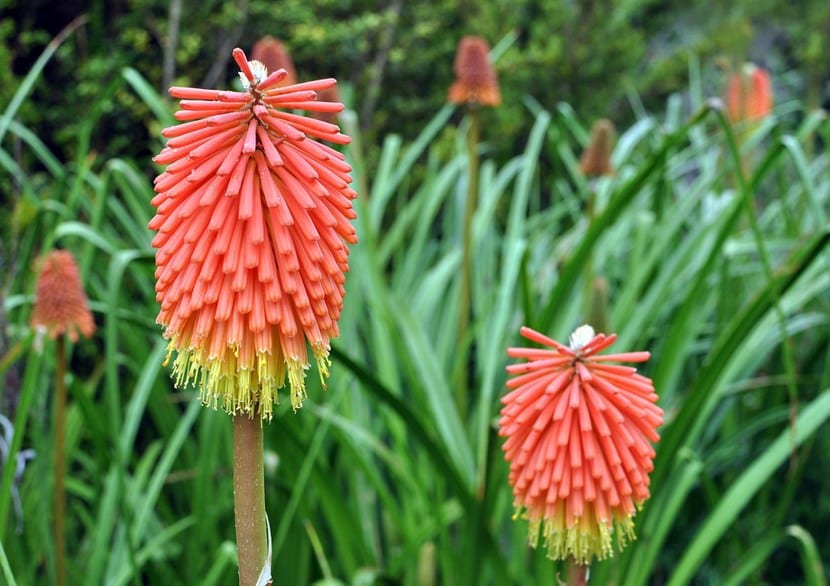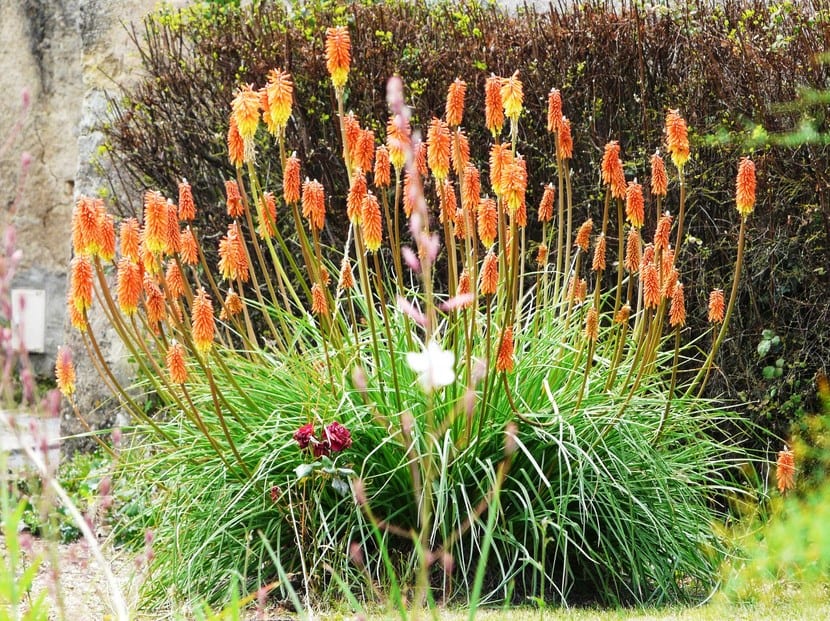
There is a plant that is truly exotic, ideal for decorating gardens and unleashing design. We talk about the kniphofia uvaria, a plant that draws attention immediately due to its appearance.
The most striking thing is his inflorescence, spike-shaped and very brightly colored that makes it unique and very special. It is a perfect plant to highlight a corner and you can even take it into account if you want to celebrate an event outside because then you can build vases that will look great as part of the decoration.
Exotic plant like few others

Kniphofia uvaria is a plant native to the southern part of the Cape Peninsula, in South Africa. Belongs to the family Liliaceae and it has a single stem and thin, elongated leaves. However, it is its inflorescence that is most striking with its orange color that turns yellow at the base of it.
It is curious to know that this bulbous perennial plant belongs to the same family as aloe vera however their appearance is very different. Did you imagine this relationship? It has been a long time since it arrived in Europe since it arrived in the XNUMXth century.
What to offer the plant

If you want to have your Kniphofia uvaria, you should know that this plant needs a somewhat humid habitat And that is why it is necessary to pay special attention to watering, especially during the first year of the plant, when it has to be watered even twice a day in the summer season. In the winter, it is best to reduce watering but always taking care that the soil remains moist. You can check the humidity by inserting a toothpick into the ground because if it comes out stained there is still water in the ground.
Regarding the luminosity, taking into account its place of origin, it is easy to know that needs full sun so that it is in optimal conditions. Remember that a soil rich in humus will be favorable for the plant and that the sowing time is between February and June because the flowering occurs from summer to early fall. The seeds will be able to develop at an optimal temperature of between 15 and 20 degrees Celsius.